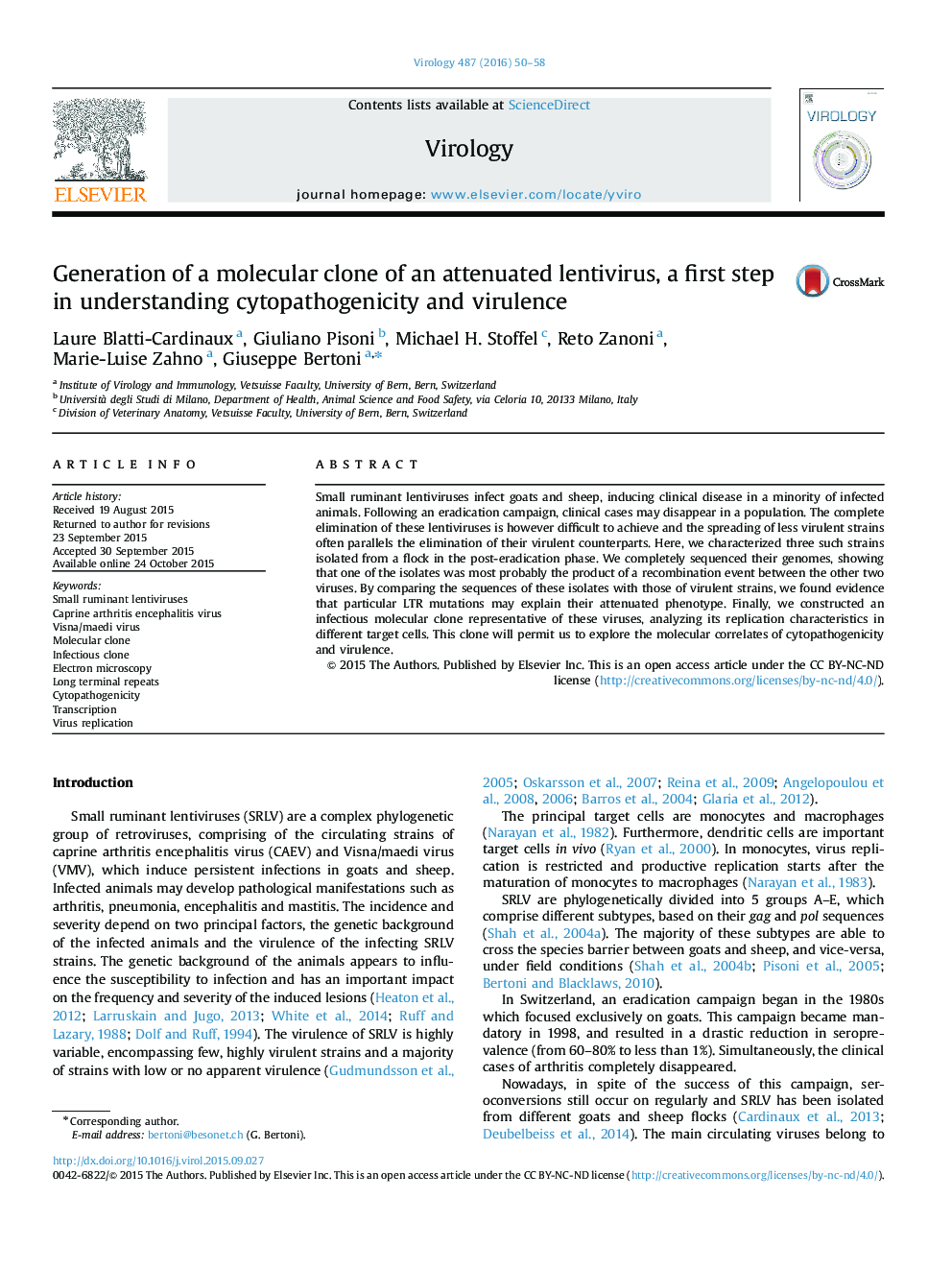| Article ID | Journal | Published Year | Pages | File Type |
|---|---|---|---|---|
| 6138808 | Virology | 2016 | 9 Pages |
Abstract
Small ruminant lentiviruses infect goats and sheep, inducing clinical disease in a minority of infected animals. Following an eradication campaign, clinical cases may disappear in a population. The complete elimination of these lentiviruses is however difficult to achieve and the spreading of less virulent strains often parallels the elimination of their virulent counterparts. Here, we characterized three such strains isolated from a flock in the post-eradication phase. We completely sequenced their genomes, showing that one of the isolates was most probably the product of a recombination event between the other two viruses. By comparing the sequences of these isolates with those of virulent strains, we found evidence that particular LTR mutations may explain their attenuated phenotype. Finally, we constructed an infectious molecular clone representative of these viruses, analyzing its replication characteristics in different target cells. This clone will permit us to explore the molecular correlates of cytopathogenicity and virulence.
Keywords
Related Topics
Life Sciences
Immunology and Microbiology
Virology
Authors
Laure Blatti-Cardinaux, Giuliano Pisoni, Michael H. Stoffel, Reto Zanoni, Marie-Luise Zahno, Giuseppe Bertoni,
